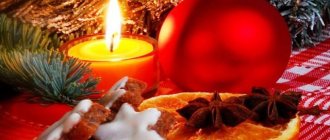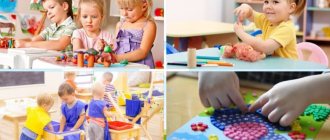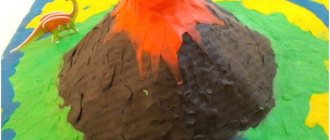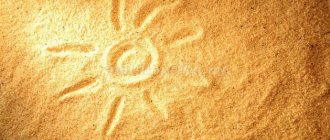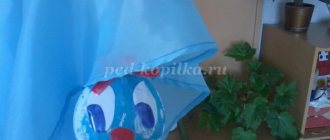A bit of geography
Beneath the ground lies magma, molten rock that seeps to the surface through small holes in the ground or erupts through craters. Volcanoes are located on the border of tectonic plates, in the mountains. But there are known cases of their appearance in areas with flat terrain and over a short period of time. Active volcanoes are generally portrayed as huge and regular in shape, but this is not the case; in fact, there are different types. Volcanoes can be tall or very small and disproportionate.
An eruption proceeds as follows: gases and magma located underground are pushed upward under strong pressure. Sometimes there are even explosions; sometimes volcanoes erupt lava, gushing like geysers.
Salt dough volcano
For the experiment you need a minimum of materials and a little patience. To make a volcano model with your own hands, you will need:
- Tray;
- Plastic bottle;
- Food paint;
- Foil;
- Dishwashing liquid;
- Salty dough;
- Vinegar;
- Baking soda.
After we have found everything we need, we begin modeling. Let's get started by following the instructions:
- To begin, take a plastic bottle and cut it into two equal parts. Place its upper part on a tray with its neck facing up.
- Take the foil and cut it into strips, wrap them around the bottle so that you get a mountain.
- Then make the salt dough, divide it into 3 parts and carefully place it on the foil, completely cover the foil with the dough. To make the volcano more realistic, paint its mouth with food coloring.
- Next we will do the experiment itself. To begin, take a few teaspoons of baking soda and pour the baking soda into the bottle, then add one and a half tablespoons of dishwashing liquid.
- Take a glass and pour a little vinegar into it, after tinting it with food coloring.
- Pour the resulting liquid into the volcano and colored foam should flow from the crater. The kids will definitely love the result.
colored lava
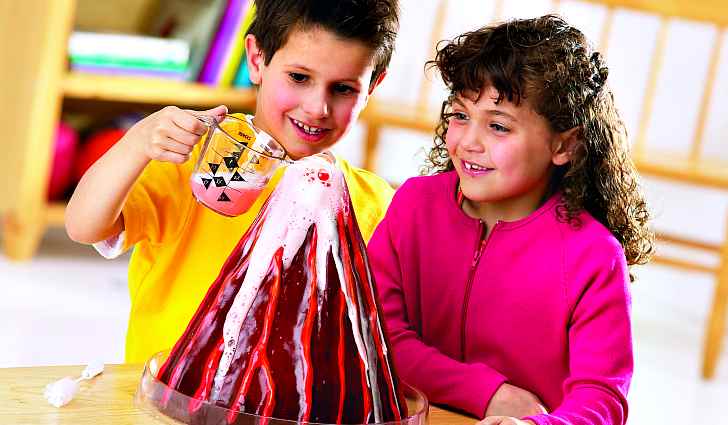
You can also make many volcanoes with different colored dyes.
To organize the experience you will need:
- Small cups or baby food jars in the amount of 6 pcs.
- Gouache of different colors.
- Sodium bicarbonate.
- Water.
- Vinegar.
- Tray.
The following actions are performed:
- Balls of 6 different colors are rolled out of soda and gouache.
- Place the vessels on a tray.
- Pour vinegar into them.
- Place prepared balls into each vessel.
Recommended for you:
How and why to wash fruits and vegetables with soda
A colorful violent reaction will occur. You can also watch how different colors are mixed on a tray.
From baking soda
To make the product, you will need: water, vinegar, diluted food coloring, dishwashing detergent, baking soda.
Procedure for creating a volcano:
- To begin, take about a glass of baking soda and add three tablespoons of water to it, thus obtaining a mixture for sculpting a volcano. If you want to make a big volcano, then add more water.
- Mix the baking soda well and make a mountain. Let it dry, this will take some time, about 3-4 hours.
- Then color the craft with food coloring.
- Place the product on the container, add a little vinegar, about a teaspoon and a tablespoon of detergent. As a result, foam and hissing will pour out of the volcano.
rushing river
To create a river that will boil you will need:
- Plastic pipe.
- Sodium bicarbonate.
- Vinegar.
- Water.
- Food coloring
Do the following:
- Take a plastic pipe and cut it lengthwise.
- Place a makeshift river bed in the bathtub.
- Mix soda and citric acid in a 2:1 ratio.
- Prepare a vessel with water.
- For added color, you can add food coloring to the water or soda mixture.
- Pour baking soda and vinegar into the channel.
- Gradually add water.
From the actions taken, the water will run and foam. If you close the drain, the bath will be a kind of colored lake.
Made from plasticine and paper
It will be even faster to model a volcano from paper and plasticine. First, let's create the shape of the product. Take a piece of cardboard, fold it to form a cone, and cut off the top of the resulting cone. A model of a volcano made at home.
Now stick plasticine on top of the resulting model, you should get a mountain. Place the layout on a tray or platter. Place the lava mixture (food coloring, paint, soda) into a jar and place the jar inside the craft. The homemade volcano is ready. You can make such a product quickly, simply and without much expense.
All that is needed
For the experiment you will need some household chemicals and decorative elements to create an island. The volcano island can be made from natural materials or use dinosaur sensory box sets.
A model of a volcano is made from plasticine. Creating a fabulous volcanic island for the experience is the main component of it and serves to develop the child's imagination and creativity. Such activities will help instill a love for chemistry and geography. The child will develop fine motor skills of the fingers while making plasticine terrain and its inhabitants.
Reusable craft
This option is very convenient, because you can return to the created volcano again and again. To create a craft you will need:
- Paper;
- Plastic lid for mayonnaise or sour cream;
- Foil;
- Gypsum plaster;
- Regular tape and masking tape;
- Acrylic paint;
- Basis for the product;
- Regular 1.5 liter bottle.
Next we follow the instructions. We do the following step by step:
- Cut the top of the plastic bottle so that you have a mountain of a suitable height, place it in the lid and secure it with tape. The result was a strong foundation for the volcano.
- Attach the resulting craft to the plywood with tape. You can also use a plastic backing as a base.
- Then you need to give the bottle a cone shape. Take some foil and wrap it around the bottle and secure it with masking tape. We take the paper, tear it into small pieces and secure them with masking tape around the product.
- Dilute the gypsum plaster with water to a thick consistency and pour it onto the product. Correct the necessary places.
- Wait two to three hours, let the product dry thoroughly, then decorate it to your liking.
For the eruption you will need: vinegar, a little baking soda, red food coloring, a little dishwashing detergent.
Now the most interesting stage has come. Place a little baking soda inside the crater, add a little dishwashing liquid and add red food coloring. If required, add a little water. Add a little vinegar to the crater of the volcano, and the eruption begins!
Experience . Boiling Lake
You need to use your imagination, imagining that a bowl of water is a huge body of water and tell your child about it. Children are dreamers and can easily be drawn into play. For the experiment you will need:
- Dishes.
- Soda.
- Vinegar or citric acid.
How to make a “boiling” lake:
- Add a little soda and citric acid to the water and the pond will begin to bubble.
- Give your child the opportunity to do it himself - he will like it.
- Throw in the components one at a time, changing their sequence to cause further “boiling” of the liquid.
The boiling lake actually exists. It is located on the territory of Kunashir (Kuril Islands) and is heated by volcanic gases, hence the name of the reservoir. The most interesting thing is that it is connected by an artificial canal to a lake called Goryacheye.
Big Bang
Children will especially like this drink. To simulate a big bang, you need the following:
- You will need a coating that is not afraid to get dirty, so get ready for a mess.
- You will need a decent sized container, such as a liter plastic bottle.
- To shape the appearance of the product you will need clay or foil, you can use plasticine. To add realism, paint the volcano black and brown. It will take some time for it to dry.
- Add hydrogen peroxide. You need 6 percent peroxide, pour half a cup of peroxide into the container located in the product. Be careful and careful when using peroxide. If you come into contact with hydrogen for a long time, you can get hurt, or the peroxide can get into your eyes and harm them. Children are not allowed to use peroxide. To make the eruption even more spectacular, you can use a 30% peroxide solution, but it will be extremely difficult to obtain.
- Mix about 3 drops yellow food coloring and 7 drops red. Then add two tablespoons of dishwashing detergent to the resulting mixture.
- Stir a tablespoon of dry yeast in a small bowl with 3 tablespoons of water.
- Pour the yeast into the resulting product and step away.
Making a fairytale island

You can build an island in a large plastic container. Pour real water and line the bottom with round pebbles. Make a container for the volcano from a baby food jar or an old glass. For the mountain inside which the container will stand, you need to make a cardboard model; your child will be happy to cover it with plasticine.
The sequence of making a volcanic mountain:
- cut out a circle of the required diameter from thick cardboard;
- make a cut from the edge to the center of the circle;
- roll up a cone;
- the edges of the cone are fastened with a stapler or tape;
- cut off the upper part of the cone at a height equal to the container chosen for the volcano;
- place the container inside the cone.

I coat the top of the mountain with plasticine. To do this, roll out small brown plasticine cakes and stick them to a paper cone, completely covering the cardboard. The top of the volcano can be made of red plasticine, which will imitate hot lava.
They place a volcanic mountain on a dry island of pebbles. They are seated around small rubber animals that are among children's toys. Multi-colored amazing dinosaurs or wolves, foxes, bunnies, bears and other inhabitants of the forest and jungle. Depending on what animals were planted, vegetation for the island is selected. Large tree ferns and horsetails for dinosaurs, and ordinary fir trees and birches for bunnies and foxes.
Plastic plants are also often sold in sets for children's games. You can use a leaf of a living fern and twigs of plants if it is summer outside.
Plants can also be molded from plasticine, made from threads and beads or ordinary cardboard.
You can make small houses out of cardboard for plastic Indians and soldiers. It is better to use cardboard to make plants and houses when the island is in a container with blue-dyed sand instead of water or on a blue plasticine sea.
Using liquid nitrogen
A little dangerous, but no less interesting way. An even bigger spectacle will be achieved if you do the following:
- It is recommended to conduct research only in the open air, because the eruption will be simply huge and will require a lot of space. The experiment can only be done by adults, as it is extremely dangerous, let children watch the experiment and be delighted. Believe me, this is very dangerous, even adults need to be careful.
- To carry out the experiments you will need a couple of assistants, preferably even three. You will need to wear loose clothing and cover your skin. For the experiment, you will need liquid nitrogen, which is very dangerous for human skin; you must remain attentive and careful when conducting the experiment. Those conducting the experiment must wear glasses, and they will not interfere with the spectators.
- You will need a plastic bucket of excellent quality and large size so that it does not break during the experiment. The bucket should be thick and very durable, buy a new bucket. It needs to be installed on a hard surface in the fresh air. The covering can be cement or brick.
- Fill the bucket 80%. If desired, you can tint the water. Use tennis balls to simulate falling boulders.
- You will need a liter bottle, attach a brick to it on both sides using tape.
- Place the resulting product on the ground, let an assistant hold the funnel over the bottle. Pour some liquid nitrogen into the bottle, but do not overdo it. The second assistant should immediately close the bottle. You need to put the bottle in the bucket in 5 seconds, hurry up.
- Quickly place the bottle in the bucket and run away from there. In about 20 seconds the eruption will begin.
- Enjoy the results. Observers are advised to stay no closer than 9 meters from what is happening. The result is a scaled-down model of the Plinian eruption often associated with ancient Vesuvius. First, the water is thrown up and falls as rain. The eruption will be truly huge. If after three minutes of waiting nothing happens, then the experiment was unsuccessful, do not despair. Try again, there may be something wrong. For example, the lid was tightened too loosely or too late.
How to inflate a balloon without hands?
What will you need for the experience?
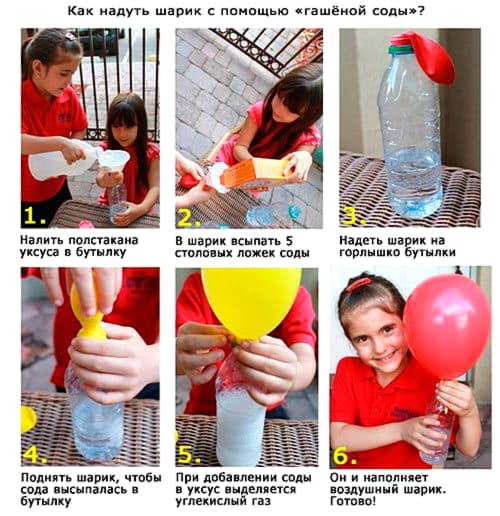
How to conduct an experiment?
Prepare all materials and place them at an accessible distance. A solution of soda and water should be poured into a glass bottle. Then pour vinegar into the bottle and quickly put a balloon on the neck of the bottle. It is important to secure the ball well on the neck with tape so that the ball does not rip off. Almost immediately you will notice how carbon dioxide fills the balloon, inflating it.
Small tips
When creating woodcan at home, use your imagination. Here are some tips:
- If desired, color the product.
- Add the ingredients carefully to avoid messing anything up.
- To enhance the eruption, add mints and soda.
- Be sure to wear goggles and gloves.
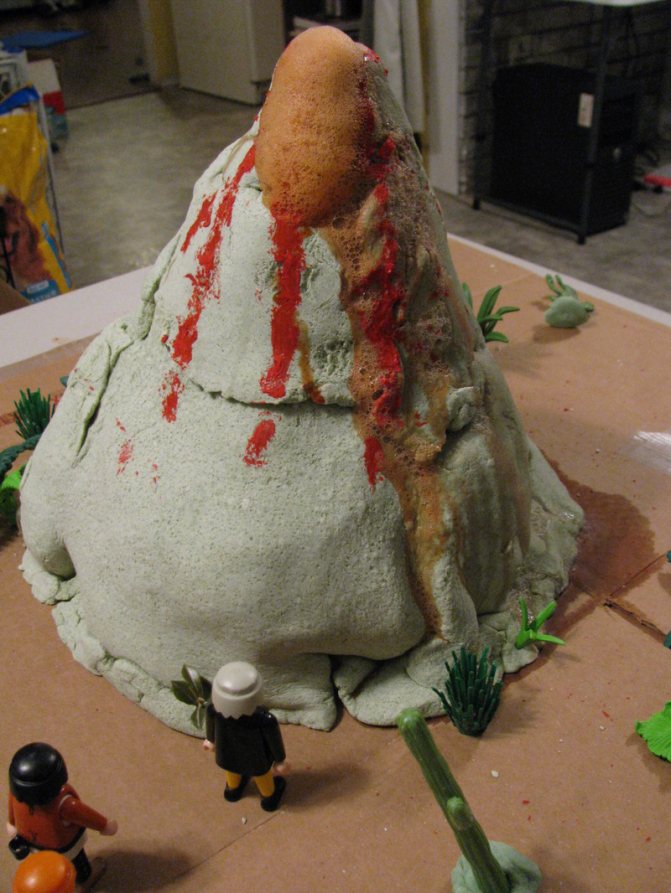
As you can see, making a volcano at home is simple and fun. The product will give an unforgettable experience to both children and adults. Making a volcano can be combined with a geography or chemistry lesson for children, and adults will simply have a good time doing this activity.
Originally posted 2018-08-29 09:26:24.
Boiling water in a glass
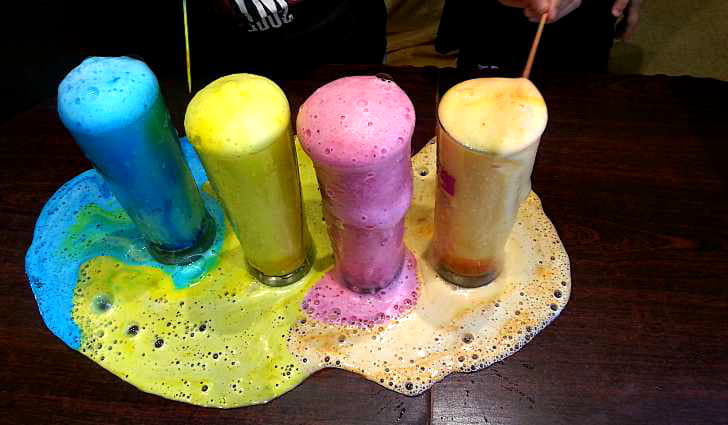
When you don’t have plasticine or a bottle at hand, you can use an ordinary glass to set up the experiment. The child can be told that the water will now boil without exposure to heat.
Recommended for you: How to soften water with baking soda at home
To do this you need:
- Cup.
- Lemon acid.
- Sodium bicarbonate.
- Water.
Follow these steps:
- Place the vessel on the tray;
- Add 2 tsp to a glass of water. NAHCO3;
- Add a teaspoon of lemon acid.
Instead of soda, you can add vinegar or citric acid (2.5 tsp of vinegar or citric acid per 500 ml of water).
Then boiling water is obtained. When sodium bicarbonate and citric acid or vinegar come into contact with water, they interact, causing the water to boil.

